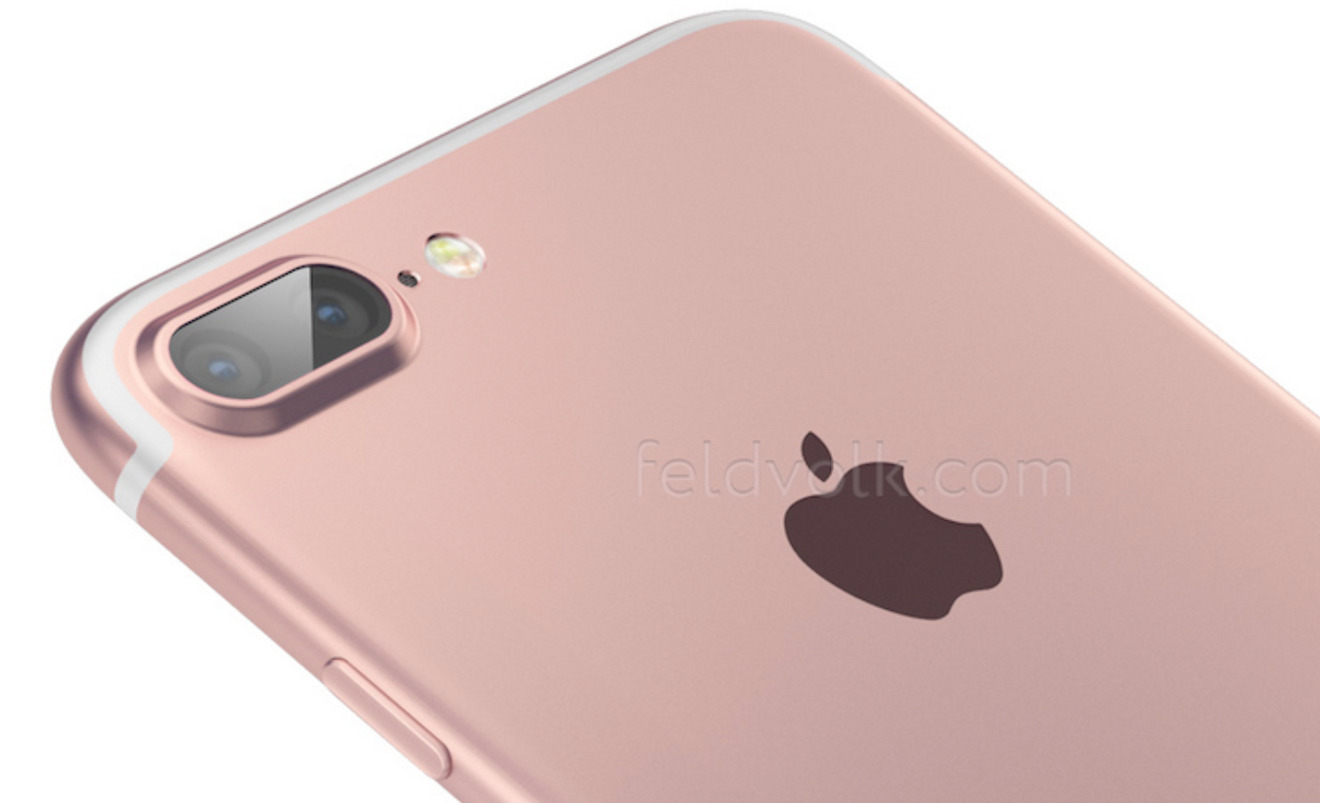Like clockwork, Apple's well-established annual iPhone release cycle is on track once again, as a new report claims the company's suppliers are prepared to begin shipping the "iPhone 7" and "iPhone 7 Plus" by the end of the third quarter.
That timetable, reported on Tuesday by DigiTimes, would see the next-generation iPhone models on track for launch by the end of September. Apple has launched new iPhones in September since the debut of the iPhone 5 on Sept. 21, 2012, and last year the iPhone 6s and iPhone 6s Plus arrived in the hands of consumers on Sept. 25.
Tuesday's report alleges that the new 4.7-inch iPhone will see assembly split between Foxconn and Pegatron, while Foxconn and Wistron will handle the larger 5.5-inch model. Wistron's alleged assembly of the "iPhone 7 Plus" would be a change-up for Apple, which hasn't partnered with that assembler since the iPhone 5c.
It was also said that Apple has queued up multiple suppliers for the "iPhone 7" launch to reduce risks. At least two suppliers are on tap for many of the device's major components, including batteries, the report said.
DigiTimes has a mixed track record in predicting Apple's future product plans, but its supply chain sources do, on occasion, provide reliable information about upcoming launches. And Apple's consistent annual release pattern for the iPhone would strongly suggest consumers waiting to upgrade can bank on a late September launch.
The so-called "iPhone 7" is expected to feature a thinner design that could ditch the legacy 3.5-millimeter headphone jack, instead relying on Lightning- and Bluetooth-connected headphones. Leaked schematics suggest the external appearance will be largely similar to the iPhone 6s and iPhone 6 series, though the antenna lines on the back of the handset will be removed.
Though reports on the hardware have been somewhat inconsistent, it's been suggested that a new dual-camera design and 3 gigabytes of RAM could be exclusive to the larger "iPhone 7 Plus." Some designs have also been shown with a magnetic Smart Connector on the rear case.
 Neil Hughes
Neil Hughes







-m.jpg)






 Charles Martin
Charles Martin
 Christine McKee
Christine McKee
 Wesley Hilliard
Wesley Hilliard
 Malcolm Owen
Malcolm Owen
 Andrew Orr
Andrew Orr
 William Gallagher
William Gallagher
 Sponsored Content
Sponsored Content







16 Comments
It's looking more and more like the larger likely marketed as 'Pro' iPhone will be the technically superior iPhone. What's sad about this strategy is while Apple gets to talk about iPhone as really high end in this scenario the vast majority of us get an inferior product—especially folks like me who prefer the ~4.2" form factor (I use ~4.2" because that's my more ideal display size; kill the bezel, but I certainly choose 4" over 4.7" no question).
Finance wise it helps Apple probably to up-sell for more features, but I wish all iPhones were flagship and iPhone came in three screen sizes, all with dual cameras and smart connectors. Screen size plus and slight price up-tick are enough of a differentiator for new model iPhones going forward—people understand a larger iPhone would cost more with larger materials.
Anything else seems like intentionally gimping the smaller devices—there's no need; smaller iPhone lovers shouldn't suffer. With something like iPad or Mac it makes more sense because iPad Pro is a professional drawing machine and non pro Macs are well good enough for regular people.
But everyone wants/needs the best camera and everyone could make use of an iPhone smart connector.
iPhone 7 lineup for iPhone lovers:
(reduced bezels; dual cameras; smart connector)
4.2" iPhone 7 mini (7.3 mm, 64 GB, $599)
4.7" iPhone 7 (7.1 mm, 64 GB, $699)
5.5" iPhone 7 plus (6.9 mm, 64 GB, $799)
Apple following the same production schedule as it has for the last five years...news at 11.